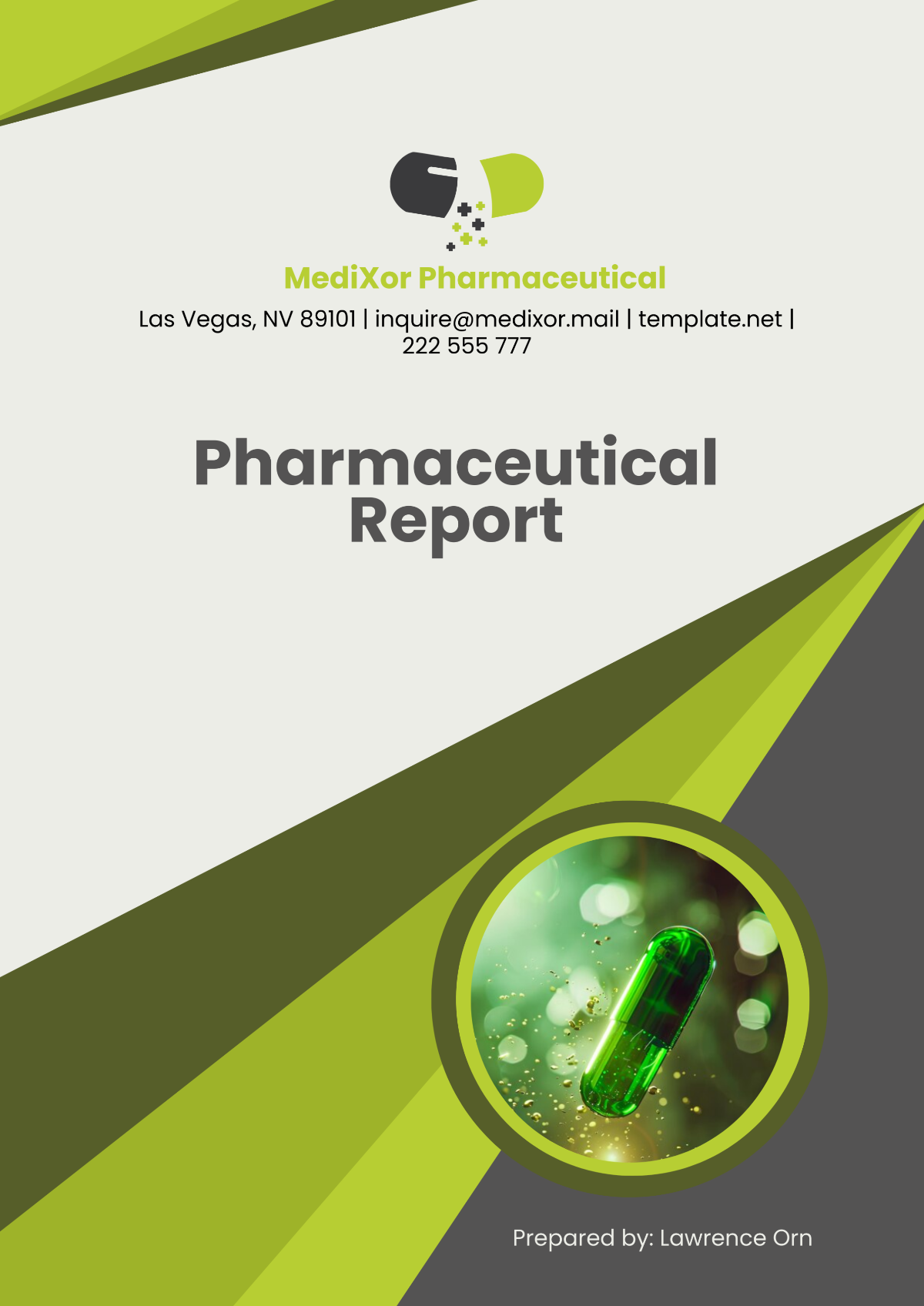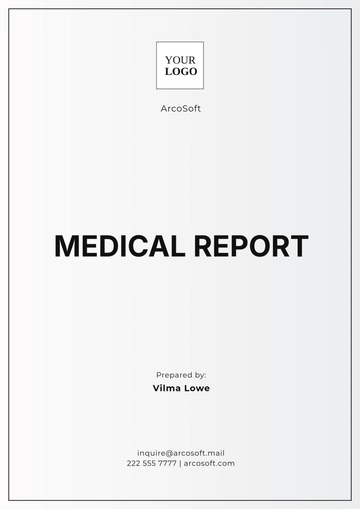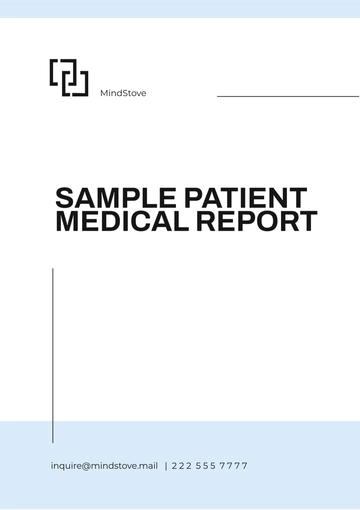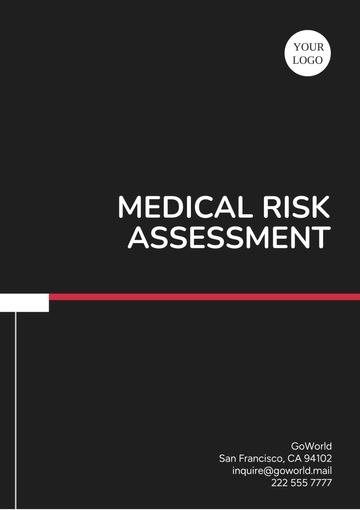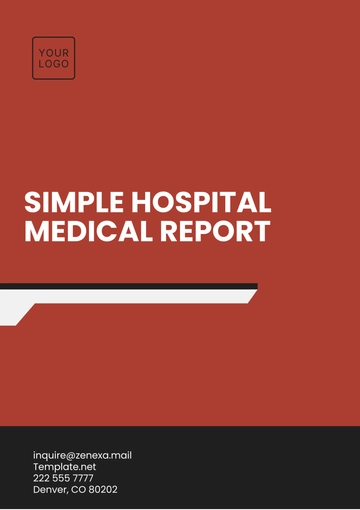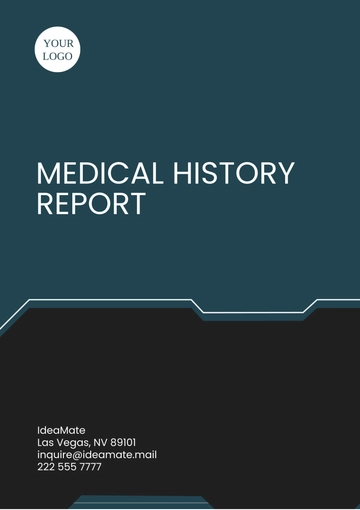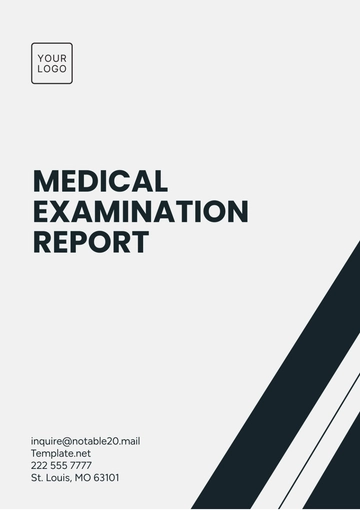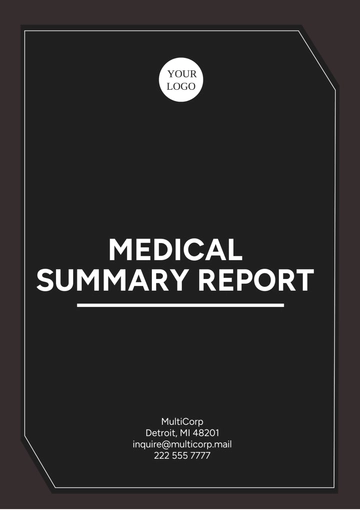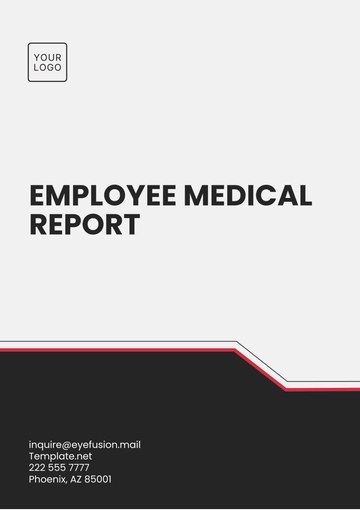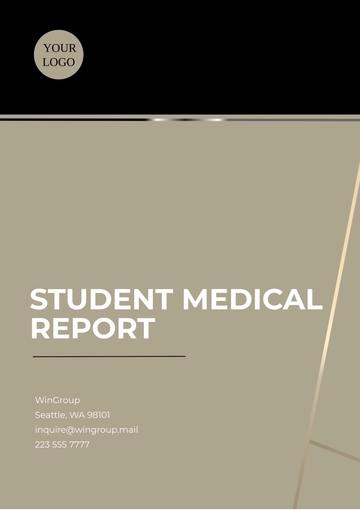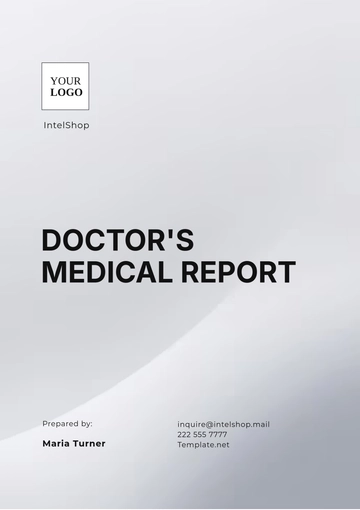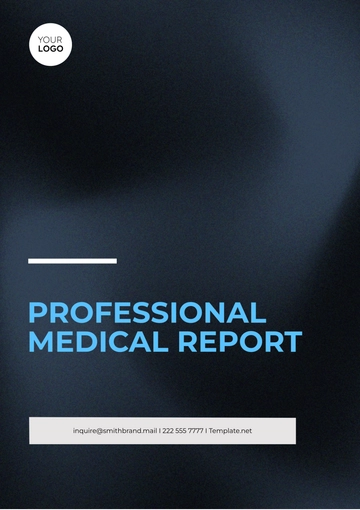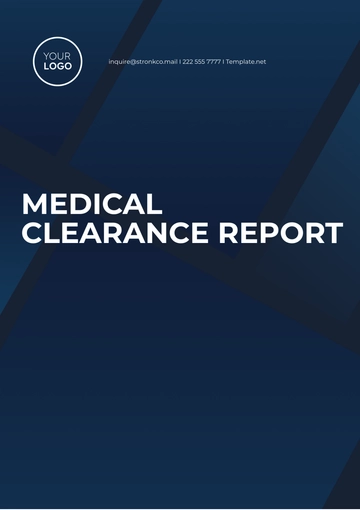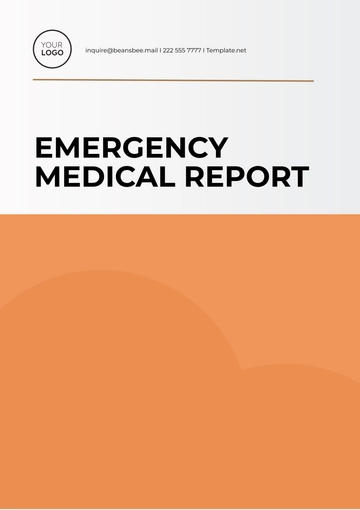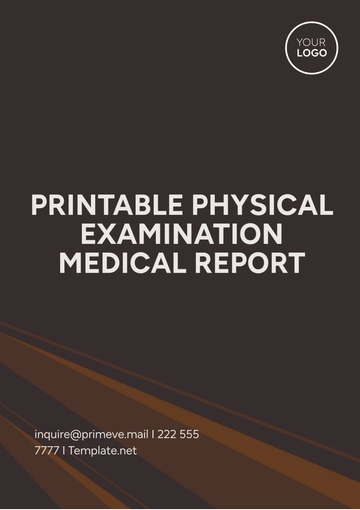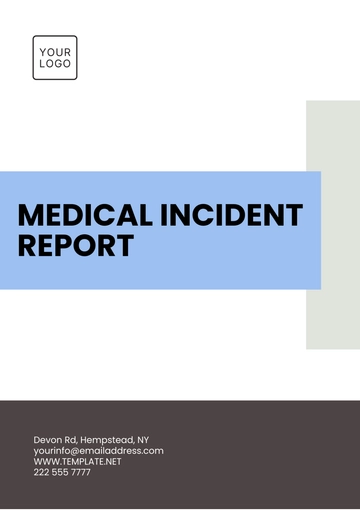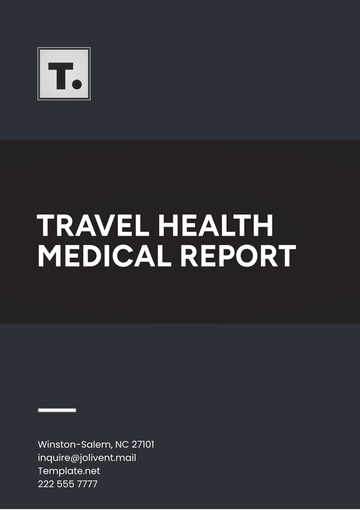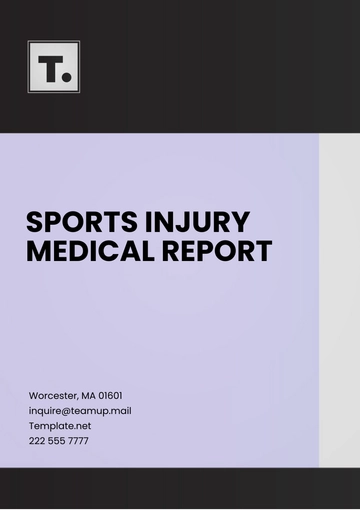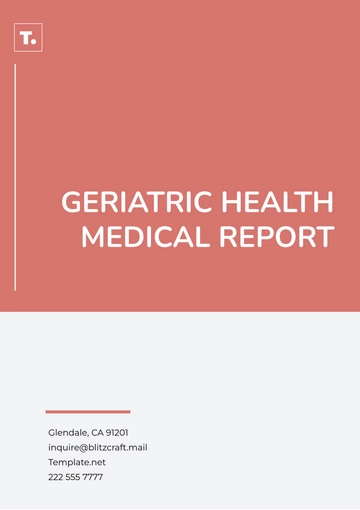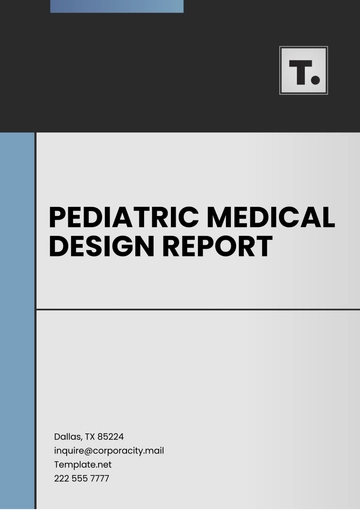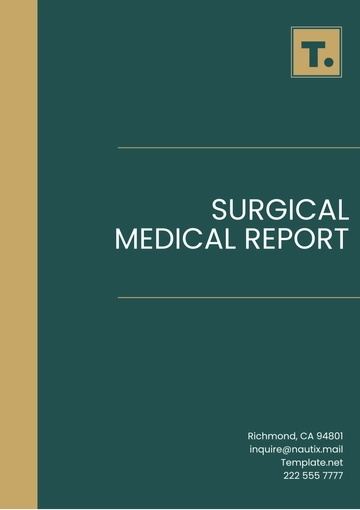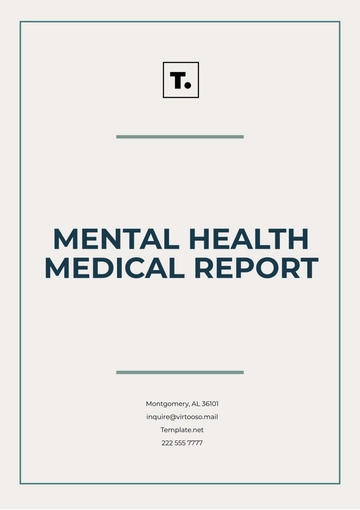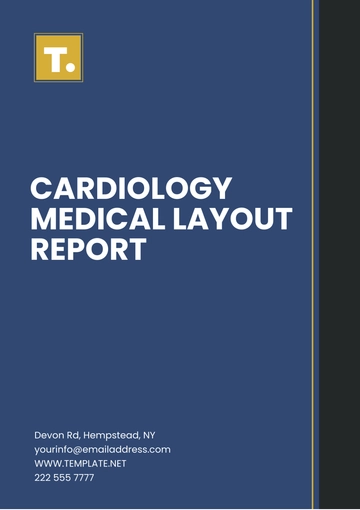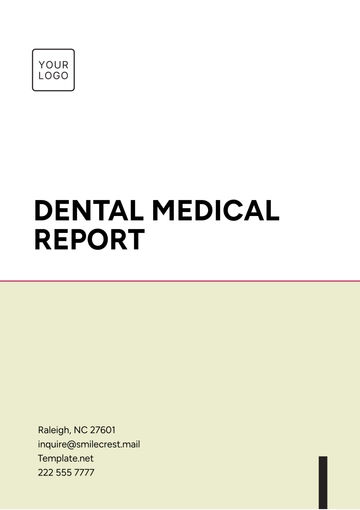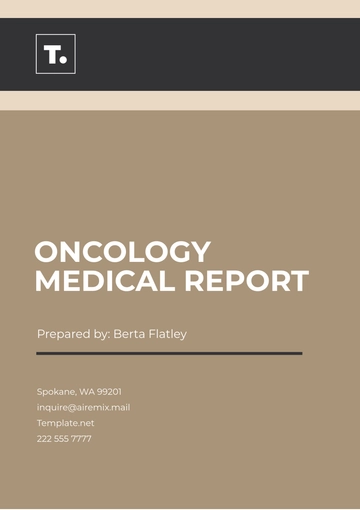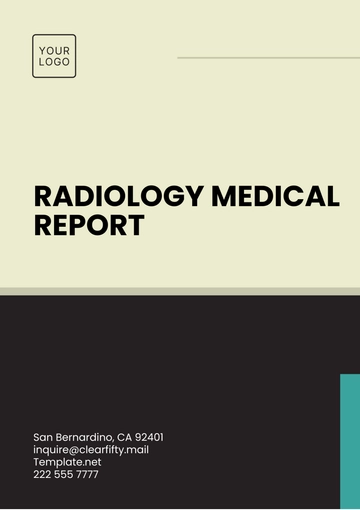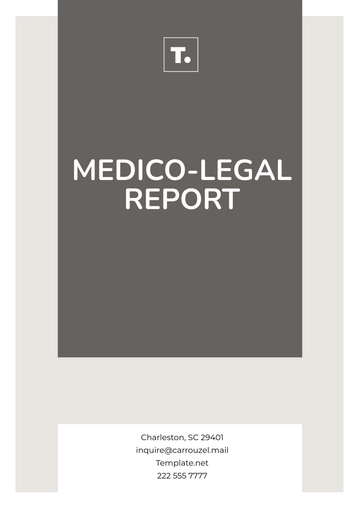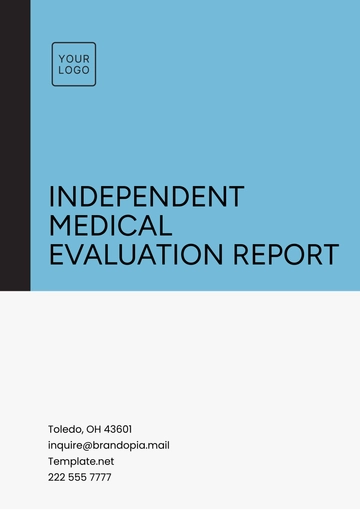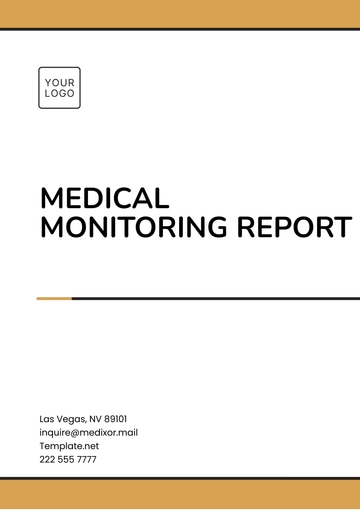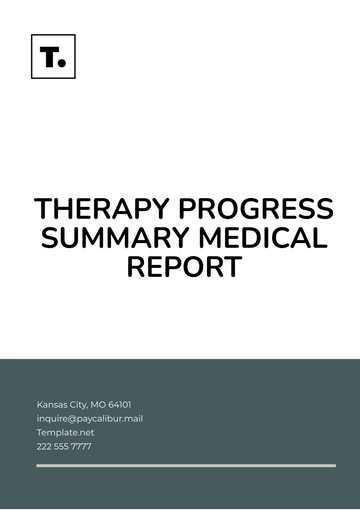Pharmaceutical Report
I. Executive Summary
This annual report provides an in-depth overview of [Your Company Name]'s operations, logistics strategies, and performance metrics for [2052]. This report highlights successes, challenges, and strategies to maintain operational excellence while ensuring timely medication delivery to all stakeholders.
II. Supply Chain Overview
The supply chain plays a critical role in ensuring that medications are produced, stored, and delivered seamlessly. This section reviews supply chain performance, focusing on agility, resilience, and cost management.
Component | Performance (2052) | Goal (2053) |
|---|
Raw Material Procurement | 95% on-time delivery | 98% on-time delivery |
Warehousing Efficiency | 92% space optimization | 95% space optimization |
Inventory Turnover Ratio | 10.2 cycles/year | 11 cycles/year |
Distribution Timelines | Avg. 4 days | Avg. 3 days |
Logistics Cost Optimization | $0.75/unit | $0.70/unit |
Procurement Success: Despite global disruptions, [95%] of raw materials were delivered on schedule. Strong supplier relationships minimized delays and ensured production continuity.
Warehousing Innovations: Automated storage systems improved space utilization, reaching [92%] efficiency. Future upgrades aim to enhance capacity and speed.
Inventory Management: Achieving a turnover ratio of [10.2] cycles per year reflects efficient inventory use. Continued optimization strategies are planned to increase this metric.
Timely Distribution: The average delivery timeline was reduced to [4] days, ensuring timely access to medications. Investments in logistics technology supported this improvement.
Cost Efficiency: Logistics costs were lowered to [$0.75] per unit through route optimization and bulk transportation. Further savings are expected with fleet modernization.
III. Production Performance
In [2052], production efficiency and output quality remained top priorities for [Your Company Name]. This section analyzes key performance metrics, highlighting successes and areas for enhancement.
A. Output Growth
The company produced [18,000,000] units, marking a [12%] increase from the previous year. Process improvements and workforce efficiency drove this growth.
B. High Quality Standards
With a [85%] batch quality pass rate, the company maintained industry-leading standards. Rigorous testing protocols played a significant role.
C. Enhanced Productivity
Workforce output improved to [280] units per shift, showcasing better training and process automation. Further improvements are planned for the coming year.
IV. Logistics Innovations
Technological advancements and strategic initiatives improved logistics efficiency in [2052]. These innovations supported timely and cost-effective medication delivery worldwide.
Innovation | Impact | Implementation Status |
|---|
Route Optimization Software | 12% cost reduction | Fully Implemented |
Temperature Monitoring | 99% compliance rate | Ongoing |
Blockchain for Transparency | Improved visibility | Piloted |
Drone Deliveries | 20% faster delivery | Testing Phase |
Automated Warehousing | 25% efficiency boost | Fully Operational |
Route Optimization: AI-driven route optimization reduced transportation costs by [12%]. Faster deliveries improved customer satisfaction.
Cold Chain Compliance: IoT temperature monitoring ensured [99%] compliance with storage requirements. This preserved medication integrity during transit.
Blockchain Transparency: Blockchain technology provided real-time visibility into supply chain operations. A pilot program demonstrated significant potential for scaling.
Innovative Delivery Methods: Drone deliveries were tested for last-mile logistics in remote areas. Early results show a [20%] improvement in delivery times.
Warehouse Robotics: Robotics in inventory management increased efficiency by [25%], reducing manual errors and processing times. This innovation is now fully operational.
V. Sustainability Initiatives in Operations
Sustainability remained a key focus, with initiatives targeting energy efficiency, waste reduction, and eco-friendly logistics practices. This section outlines the progress made in aligning operations with sustainability goals.
Initiative | Progress (2052) | Target (2053) |
|---|
Renewable Energy | 50% energy from renewables | 60% |
Waste Minimization | 18% waste reduction | 25% |
Eco-Friendly Packaging | 40% packaging converted | 60% |
Carbon Emission Reduction | 22% reduction achieved | 30% |
Water Recycling | 10% reduction in water usage | 20% |
Half of the company’s energy requirements were met through renewable sources in [2052]. Additional solar and wind projects are underway. Production waste was cut by [18%] through better material utilization and recycling initiatives. This aligns with broader environmental goals. Eco-friendly packaging now constitutes [40%] of total materials used. Expanded supplier partnerships will facilitate further transitions.
VI. Financial Overview
The financial performance of operations and logistics demonstrates a strong return on investment in efficiency and sustainability. This section provides an overview of expenditures and outcomes.
Category | Expenditure |
|---|
Supply Chain Optimization | $12,000,000 |
Technology Integration | $8,000,000 |
Workforce Training | $3,000,000 |
Sustainability Initiatives | $5,000,000 |
Contingency Management | $2,000,000 |
Operational Investment: Investments in supply chain optimization yielded significant cost savings and improved delivery performance.
Technology-Driven Gains: Allocating [$8,000,000] to technology enhanced operational efficiency by [20%]. Automated systems played a critical role in these improvements.
Risk Management: Contingency funds helped mitigate disruptions, ensuring continued operations during unforeseen challenges.
VII. Next Steps
To build on the achievements of [2052], [Your Company Name] will focus on scaling innovations and addressing operational challenges. Future efforts aim to enhance efficiency, sustainability, and customer satisfaction.
Scalable Technologies: Expand blockchain and drone delivery initiatives to achieve full-scale implementation by [2053].
Global Distribution: Strengthen international logistics networks to support market expansion.
Sustainability Commitment: Increase renewable energy use and accelerate eco-friendly packaging adoption.
Employee Training: Introduce advanced training modules to ensure workforce adaptability to new technologies.
Risk Mitigation: Enhance contingency planning to address potential global supply chain disruptions.
By prioritizing innovation, sustainability, and resilience, [Your Company Name] is well-positioned to maintain operational excellence and support patient health worldwide.
Pharmaceutical Templates @ Template.net
